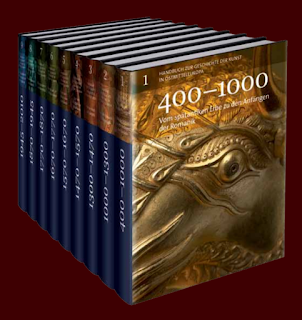 |
| Late 14th century wall-painting at Nitra cathedral |
Regular readers of this blog may have noticed that I haven't posted here for a while. The reasons for this are manifold - among others, I don't seem to have as much time these days as some years ago. Also, I feel that the importance of this blog has decreased in the last few years. When I started this blog ten years ago, it was very hard to find up-to-date information about the art of Medieval Hungary. Thanks to numerous new publications and online resources, the situation has improved considerably in recent years. Most importantly, a new English-language survey book is now available on the subject, providing up-to-date information. Those who would like to find publications on more specific subjects, I can now advise the consultation of the annotated bibliography I put together for Oxford Bibliographies in Art History. It is a rather comprehensive bibliography on Art and Architecture in the Medieval Kingdom of Hungary and can be consulted online (with a valid institutional subscription).
In addition, the digitization of museum collections (such as the Museum of Fine Arts/Hungarian National Gallery, the Hungarian National Museum or the Christian Museum in Esztergom) and library collections of medieval manuscripts (see especially the new database of the Bibliotheca Corviniana) make a lot more material much more accessible. In other words, it is much easier for English-speaking scholars to find information about the art of Medieval Hungary than it was a decade ago.
 |
| Original carved decoration of the portal of the parish church at Bártfa (Bardejov), discovered in 2019 |
Therefore, I feel less pressure to regularly post new information here. This does not mean that there will be no new posts here - but definitely not with the regularity characteristic of this blog until about 2017. I've looked at the blog stats now - there are about 5000 page views here per month, with the most popular posts each getting that many - hundreds of thousands of page views in total. This tells me that there is still a need for this resource.
What do you think? How did this blog help you over the years? Let me know in a comment.
***
See also: Jekely, Zsombor. “Art and Architecture in the Medieval Kingdom of Hungary.” In Oxford Bibliographies in Art History. Ed. Thomas DaCosta Kaufmann. New York: Oxford University Press, 2019. DOI: 10.1093/OBO/9780199920105-0136











































